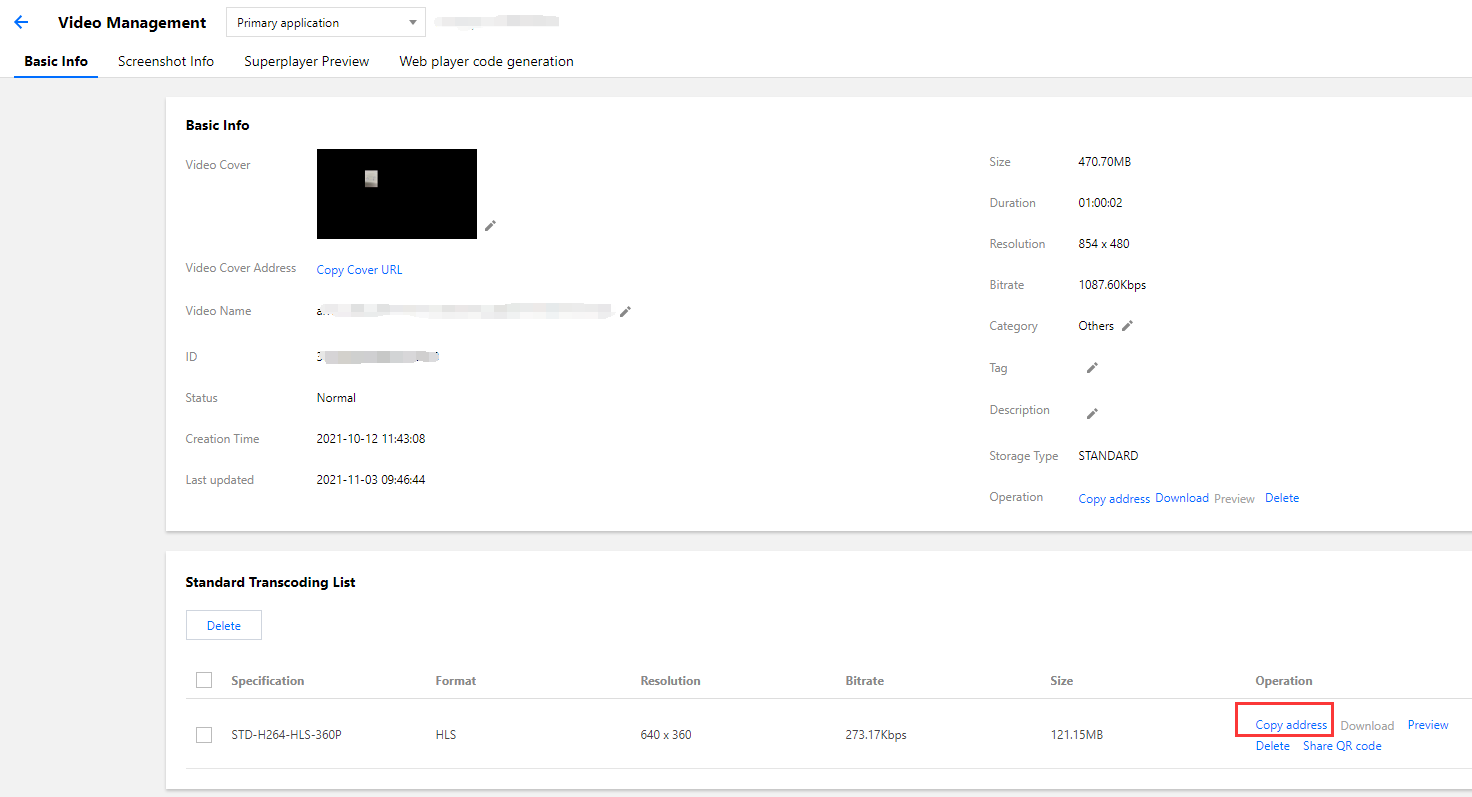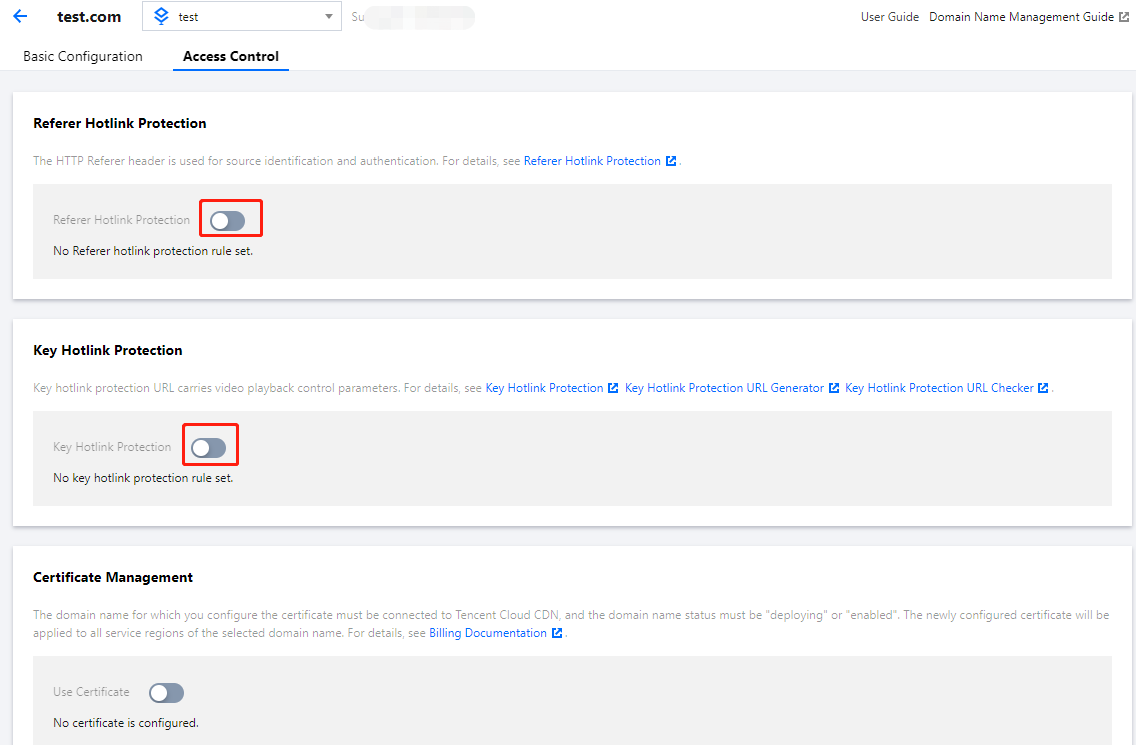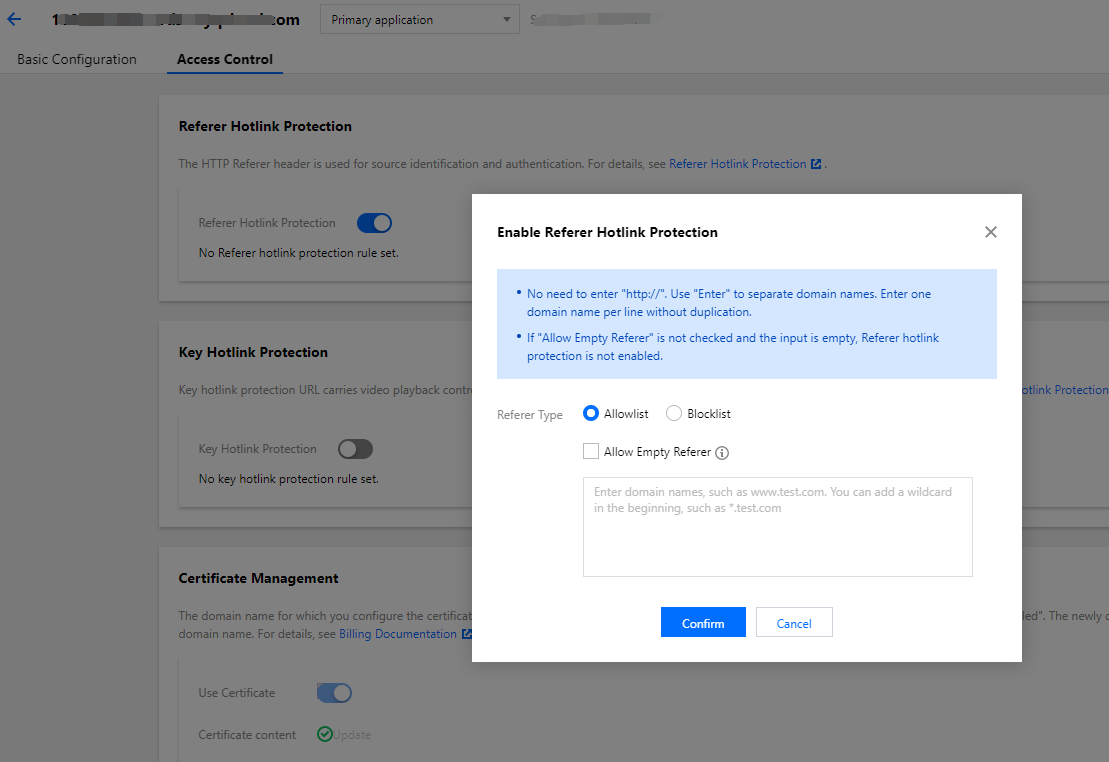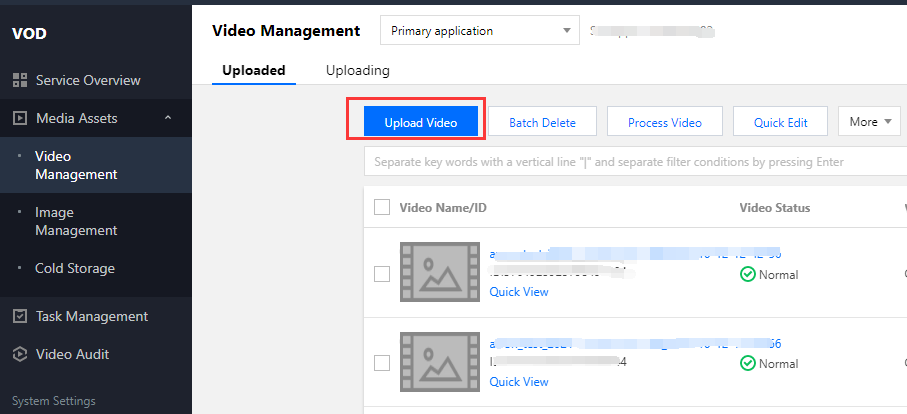如何将点播视频转为类直播效果
最后更新时间:2023-05-15 17:15:06
如何将点播视频转为类直播效果
最后更新时间: 2023-05-15 17:15:06
伪直播依托于点播的播放控制能力,将点播文件增加“限制观看时间”和“同步观看进度”两种访问控制的功能,使点播文件达成类直播效果,用户可以首先生成点播文件,在指定的直播时间使用点播文件进行类直播分发,有效的降低直播的风险与成本。
功能特性
特性 | 说明 |
开发成本低 | 如果选择将点播视频转为标准的直播进行分发,那么用户需要将视频经由 OBS 软件推流到直播平台,并对接整套直播系统,开发成本高。相比之下,伪直播都在云点播内部实现,用户只需要启用转码和防盗链功能即可。 |
违规风险低 | 使用伪直播能力,用户可以提前对自己的点播文件进行审核和编辑,有效规避直播过程中可能涉及的违规风险,规避不合规内容,提升直播质量。 |
创建简单灵活 | 没有直播房间的概念,任何视频都可以随时生成伪直播。 没有并发数限制,可以指定好开播时间并预先分发观看链接。 |
应用场景
主要应用于视频需要提前录制完毕,按照预定的时间安排让用户同步观看。用户可以提前获取到观看入口,但在预定时间点开始之前无法观看到视频。
伪直播进行过程中无法快进,常见于在线教学视频、直播晚会和广电等行业。
使用说明
使用限制
伪直播本质上是点播,因此并不具备标准直播的一些能力,例如:
不支持对“一场”伪直播进行数据统计。
无法感知“一场”伪直播的开始和结束。
不支持对正在进行的伪直播做暂停/终止等操作。
不支持对已分发出去的伪直播链接进行禁用。
不支持动态改变视频内容(例如实时转码、打水印等)。
名词解释
限制允许观看的时间:视频入口可以提前分发给观众,在伪直播开始之前或结束之后,观众都无法观看;只有在伪直播“进行”过程中才能够观看。
同步观看进度:在伪直播“进行”过程中,所有观众的观看进度都是同步的(存在分钟级别的偏移)。
前提条件
进行直播录制,详情请参见 直播录制转点播。
实践步骤
步骤1:上传视频到云点播
1. 登录 云点播控制台,单击左侧导航栏应用管理,进入应用列表页。
2. 找到需要处理音视频文件的应用,单击应用名称进入应用管理页。
步骤2:将视频转码为 HLS


步骤3:开启 Key 防盗链
1. 使用伪直播必须开启防盗链,请登录 云点播控制台,在左侧导航栏的应用管理内单击目标应用名称,选择分发播放设置 > 域名管理,单击目标域名所在行的设置,进入域名相关设置页面。


2. 在“访问控制”页面可开启 Referer 防盗链、Key 防盗链。


3. 开启后如下图所示。更多选项说明,请参见 设置防盗链。完成设置后,请保存防盗链 KEY 的内容用于以下的防盗链签名计算。


步骤4:计算防盗链签名
签名计算公式
sign = md5(KEY + Dir + t + plive + exper + rlimit + us)
注意:
参数名 | 取值 | 说明 |
KEY | 11111111 | 开发者开通 Key 防盗链时选择的密钥。 |
Dir | /dir1/dir2/ | 原始播放 URL 的 PATH 中除去 myVideo.mp4 的剩余部分。 |
t | 5a71afc0 | 过期时间戳1517400000的十六进制表示结果。 |
plive | 5e344f00 | 表示该场伪直播的开始时间(北京时间),以 UNIX 时间戳的形式表示。例如1577808000表示2020-01-01 00:00:00这个时间点。 |
exper | 0 | 试看时长,0 表示不限制。 |
rlimit | 0 | 观看 IP 数限制,0 表示不限制。 |
us | test | 生成的随机字符串。 |
例如,某个开发者在云点播有个视频,其 HLS URL (而非原始视频的 URL)播放地址:
http://1250000000.vod2.myqcloud.com/vodtranscq125000000/12345678/v.f240.m3u8;现有如下需求:HLS URL 防盗链 KEY 为
11111111。有效截止时间 t 为
5e5a8a80(即2020-03-01 00:00:00)。伪直播开始时间 plive 为
5e344f00(即2020-02-01 00:00:00)。试看时长 exper 为
0(即不限制)。观看 IP 数限制 rlimit 为
0(即不限制)。随机字符串 us 为
test。1. 根据 签名计算公式 来计算签名:
sign = md5(11111111/vodtranscq125000000/12345678/5e5a8a805e344f0000test) = 0af5018df88c00e6629e0fb8939277dd
2. 将计算后的签名拼接到 HLS URL 的 QueryString 中,最终生成的防盗链链接:
http://1250000000.vod2.myqcloud.com/vodtranscq125000000/12345678/v.f240.m3u8?t=5e5a8a80&plive=5e344f00&exper=0&rlimit=0&us=test&sign=0af5018df88c00e6629e0fb8939277dd
说明:
防盗链链接 QueryString 中参数顺序需要和计算
sign 时一样,即:t-plive-exper-rlimit-us-sign。为了方便开发者调试,我们提供了 防盗链签名生成工具页面。按页面内容填写参数后即可查看签名计算的中间结果和最终防盗链链接。
体验伪直播
在支持 HLS 播放的播放器中(例如 Safari 浏览器、VLC、PotPlayer 等。)访问上述防盗链链接,即可直接体验。
注意:
Chrome 浏览器默认不支持 HLS,需要安装插件。
文档反馈

